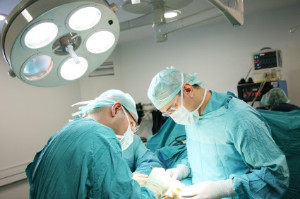
The ankle is a complex joint consisting of the subtalar joint, tibiotalar joint, and distal tibiofibular joint. It relies on ligaments to prevent excessive movement and ensure stability. When these ligaments become compromised, ankle surgery may be an option. In such cases, anatomical reconstruction is the preferred approach for repairing damaged ankle ligaments. This procedure aims to restore torn or stretched ligaments and can use either the patient's own tissue or a cadaver tendon, depending on the ligament's condition. During anatomical reconstruction, an ankle surgeon may also tighten the fibrous tissue band to improve ankle alignment and prevent future injuries. In contrast, peroneal substitution ligament reconstruction involves replacing the damaged ligament with another tendon harvested from the patient's ankle. While a viable option, it is generally considered less effective than anatomical reconstruction. Recovery times for both procedures are roughly six weeks, but it may be much longer before you can safely resume sports activities. The choice of surgery should be made in consultation with a podiatrist who is a qualified foot and ankle surgeon. This foot doctor will tailor the surgery to your specific needs and follow with thorough post-operative care and rehabilitation. If you have severely injured your ankle, it is suggested that you make an appointment with a podiatrist as quickly as possible.
Foot surgery is sometimes necessary to treat a foot ailment. To learn more, contact Glenn Aufseeser, DPM of Lakewood Foot and Ankle Specialists. Our doctor will assist you with all of your foot and ankle needs.
When Is Surgery Necessary?
Foot and ankle surgery is generally reserved for cases in which less invasive, conservative procedures have failed to alleviate the problem. Some of the cases in which surgery may be necessary include:
- Removing foot deformities like bunions and bone spurs
- Severe arthritis that has caused bone issues
- Cosmetic reconstruction
What Types of Surgery Are There?
The type of surgery you receive will depend on the nature of the problem you have. Some of the possible surgeries include:
- Bunionectomy for painful bunions
- Surgical fusion for realignment of bones
- Neuropathy decompression surgery to treat nerve damage
Benefits of Surgery
Although surgery is usually a last resort, it can provide more complete pain relief compared to non-surgical methods and may allow you to finally resume full activity.
Surgical techniques have also become increasingly sophisticated. Techniques like endoscopic surgery allow for smaller incisions and faster recovery times.
If you have any questions please feel free to contact our offices located in Lakewood and Manchester Township, NJ . We offer the newest diagnostic and treatment technologies for all your foot and ankle needs.
